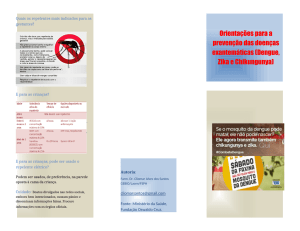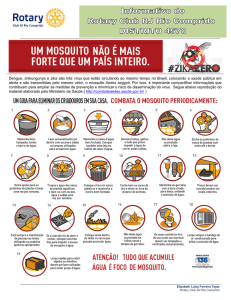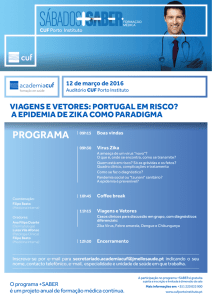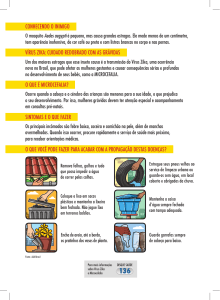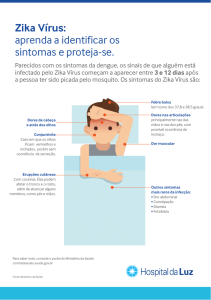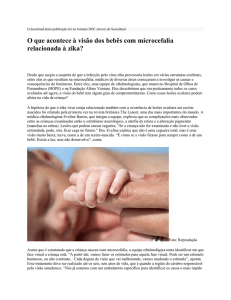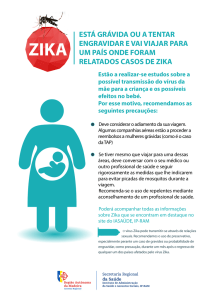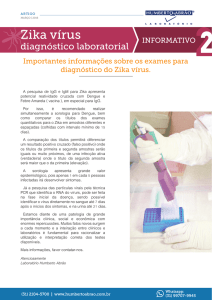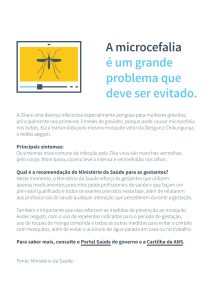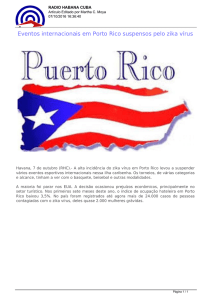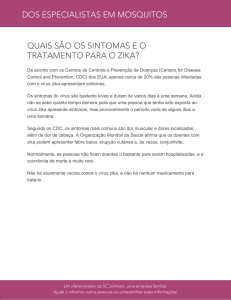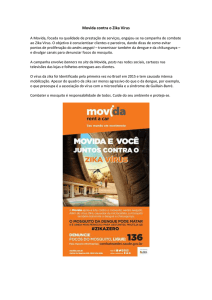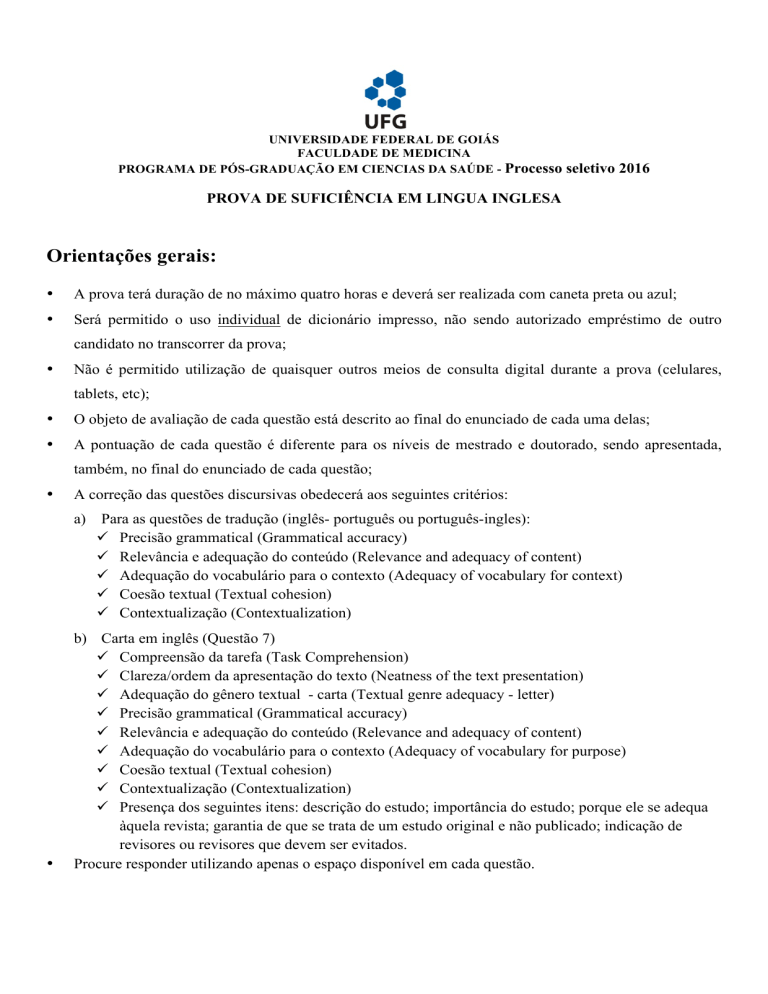
UNIVERSIDADE FEDERAL DE GOIÁS
FACULDADE DE MEDICINA
PROGRAMA DE PÓS-GRADUAÇÃO EM CIENCIAS DA SAÚDE - Processo
seletivo 2016
PROVA DE SUFICIÊNCIA EM LINGUA INGLESA
Orientações gerais:
•
A prova terá duração de no máximo quatro horas e deverá ser realizada com caneta preta ou azul;
•
Será permitido o uso individual de dicionário impresso, não sendo autorizado empréstimo de outro
candidato no transcorrer da prova;
•
Não é permitido utilização de quaisquer outros meios de consulta digital durante a prova (celulares,
tablets, etc);
•
O objeto de avaliação de cada questão está descrito ao final do enunciado de cada uma delas;
•
A pontuação de cada questão é diferente para os níveis de mestrado e doutorado, sendo apresentada,
também, no final do enunciado de cada questão;
•
A correção das questões discursivas obedecerá aos seguintes critérios:
a) Para as questões de tradução (inglês- português ou português-ingles):
ü Precisão grammatical (Grammatical accuracy)
ü Relevância e adequação do conteúdo (Relevance and adequacy of content)
ü Adequação do vocabulário para o contexto (Adequacy of vocabulary for context)
ü Coesão textual (Textual cohesion)
ü Contextualização (Contextualization)
•
b) Carta em inglês (Questão 7)
ü Compreensão da tarefa (Task Comprehension)
ü Clareza/ordem da apresentação do texto (Neatness of the text presentation)
ü Adequação do gênero textual - carta (Textual genre adequacy - letter)
ü Precisão grammatical (Grammatical accuracy)
ü Relevância e adequação do conteúdo (Relevance and adequacy of content)
ü Adequação do vocabulário para o contexto (Adequacy of vocabulary for purpose)
ü Coesão textual (Textual cohesion)
ü Contextualização (Contextualization)
ü Presença dos seguintes itens: descrição do estudo; importância do estudo; porque ele se adequa
àquela revista; garantia de que se trata de um estudo original e não publicado; indicação de
revisores ou revisores que devem ser evitados.
Procure responder utilizando apenas o espaço disponível em cada questão.
UNIVERSIDADE FEDERAL DE GOIÁS
FACULDADE DE MEDICINA
PROGRAMA DE PÓS-GRADUAÇÃO EM CIENCIAS DA SAÚDE - Processo
seletivo 2016
PROVA DE SUFICIÊNCIA EM LINGUA INGLESA
Candidato(a): __________________________________________________ ( ) M ( ) D
1. Read the text below and fulfill (in English) the blank spaces according to the context of the study and the
word
list
below,
providing
accuracy,
clarity
and
consistence
to
the
text.
(Pontuação: 1,0-M; 0,5-D).
(Nesta questão estão sendo avaliadas a sua capacidade de interpretação e de utilização do vocabulário na língua
inglesa)
The International Committee of Medical Journal Editors (ICMJE) _________________that there is an ethical
obligation to _________________ share data generated by interventional clinical trials because participants have
put themselves at risk. In a growing consensus, many funders around the world - foundations, government
agencies, and industry - now mandate data sharing. Here we outline the ICMJE’s proposed requirements to
_________________ meet this obligation. We encourage feedback on the proposed requirements.
_________________ can provide feedback at www.icmje.org by 18 April 2016.
The ICMJE defines a clinical trial as any _________________ project that prospectively assigns people or a group
of people to an intervention, with or without concurrent comparison or control groups, to study the cause-andeffect relationship _________________ a health-related intervention and a health outcome. _________________
details may be found in the Recommendations for the Conduct, Reporting, Editing and Publication of Scholarly
Work in Medical Journals at www.icmje.org.
As a condition of consideration for publication of a clinical trial report in our member journals, the ICMJE
proposes to require authors to share with _________________ the deidentified individual-patient data (IPD)
underlying the results presented in the article (including tables, figures, and appendices or supplementary material)
no later than 6 months after publication. The _________________ underlying the results are defined as the IPD
required
to
reproduce
the
article’s
findings,
including
necessary
metadata.
This
requirement
_________________into effect for clinical trials that begin to enroll participants beginning 1 year after the ICMJE
adopts its data-sharing requirements. (The ICMJE plans to adopt data-sharing requirements after considering
feedback received to the proposals made here.)
Taichman DB et al. Sharing Clinical Trial Data - A Proposal from the
International Committee of Medical Journal Editors.
N Engl J Med. 2016 Jan 20. [Epub ahead of print].
List of suggested words: will be / helps / innocently / further / help / believes / assure / responsibly / nobody /
plus / research / study / dice / between / anyone / among / less / will go / others / care / data
CHAVE DE CORREÇÃO
1. believes; 2. responsibly; 3. help; 4. anyone; 5. research; 6. between; 7. further; 8. others; 9. data; 10. will go
Based on the abstract below answer question 2:
(Nesta questão está sendo avaliada a sua capacidade de interpretação de texto na língua inglesa)
Background: Participation in continuing professional development (CPD) is a professional and regulatory expectation
of general practitioners (GPs). Traditionally, CPD activity was undertaken face-to-face in educational settings, but
internet based formats have found increasing favour. The need for doctors to use the internet for service and
educational purposes is growing, particularly in support of specialty training and appraisal. We aimed to determine
how GPs in Scotland utilise online resources in support of their CPD. This involved identifying which resources are
used and how frequently, along with their preferences as to how and why they access these resources.
Methods: A cross sectional study was undertaken using an online questionnaire to survey general practitioners across
Scotland. […].
Results: Three hundred and eighty-three GP responses were received, with the majority being female (n = 232, 60.6
%) and GP partners (n = 236, 61.6 %). The majority used the internet on three or more working days per week or more
frequently (n = 361, 94.3 %) with the three most common reasons being to obtain information for a patient (n = 358,
93.5 %), answering a clinical question (n = 357, 93.2 %) and CPD purposes (n = 308, 80.4 %). Of 37 online resources
used by respondents, the top five were SIGN Guidelines (n = 303, 79.3 %), BMJ Learning (n = 279, 73.0 %), NICE
Guidelines (n = 255, 66.8 %), GP Notebook (n = 243, 63.6 %) and Google (n = 234, 61.3 %). Low use of social media
such as Facebook (n = 11, 2.9 %) and Twitter (n = 11, 2.9 %) was reported for CPD. A majority agreed that 'reading
information online' (95.0 %) and 'completing online learning modules' (87.4 %) were the most valued online activities.
Slow internet connections (n = 240, 62.7 %), website access restrictions (n = 177, 46.2 %) and difficulties logging into
online CPD resources (n = 163, 42.6 %) were reported barriers.
Conclusions: The majority of respondents had positive attitudes to using online resources for continuing professional
development, and a preference for evidence-based and peer reviewed online resources. Information technology (IT)
difficulties remain a barrier to effective utilisation. The findings have implications for future planning and design of
online resources and IT infrastructure.
MacWalter G1 et al. Utilisation of internet resources for continuing professional development: a cross-sectional survey of general practitioners
in Scotland. BMC Med Educ. 2016 Jan 21;16(1):24.
2. Please classify the following affirmatives as T (for true) and F (for false) according to the text. (Pontuação:
1,0-M; 1,0-D)
(
(
(
(
(
) Na introdução, é relatado que os clínicos gerais, tradicionalmente, preferem a educação continuada presencial
com discussão individual.
) O objetivo do estudo é determinar a utilização de recursos online por clínicos gerais na sua educação
profissional continuada.
) O estudo observou que os médicos utilizaram a internet para obter acesso aos dados dos prontuários dos
pacientes.
) A maioria dos clínicos gerais utilizaram o google como recurso online na educação continuada.
) O maior obstáculo observado foi a conexão de internet lenta.
CHAVE DE CORREÇÃO : FVFFV
3. Translate the text below to English: (Pontuação: 1,0-M; 1,5-D)
(Nesta questão está sendo avaliada a sua capacidade de tradução da língua portuguesa para língua inglesa)
Fatos sobre as desigualdades na saúde e suas causas
Muitas crianças atualmente estão crescendo num ambiente obesogênico, que encoraja o ganho de peso e a
obesidade. O desequilíbrio energético tem resultado a partir de mudanças no tipo, disponibilidade, acessibilidade e
comercialização dos alimentos, bem como de uma diminuição na atividade física , com mais tempo gasto em
atividades sedentárias de lazer.
Extracted from Report of the commission on Ending Childhood Obesity. OMS 2016
CHAVE DE CORREÇÃO : (Vide critérios “a” folha de rosto)
Many children today are growing up in an obesogenic environment that encourages weight gain and obesity.
Energy imbalance has resulted from the changes in food type, availability, affordability and marketing, as well
as a decline in physical activity, with more time being spent on sedentary leisure activities.
According to the abstract below, answer question 4.
(Nesta questão está sendo avaliada a sua capacidade de interpretação de texto na língua inglesa)
Child Abuse Negl. 2016 Jan 15;52:62-69. doi: 10.1016/j.chiabu.2015.12.015. [Epub ahead of print]. Using simulation to identify
sources of medical diagnostic error in child physical abuse.
Anderst J1, Nielsen-Parker M1, Moffatt M1, Frazier T1, Kennedy C1.
Abstract
Little is known regarding sources of diagnostic error at the provider level in cases of possible child physical
abuse. This study examines medical diagnosis as part of medical management and not as part of legal
investigation. Simulation offers the opportunity to evaluate diagnostic accuracy and identify error sources.
We aimed to identify sources of medical diagnostic error in cases of possible abuse by assessing diagnostic
accuracy, identifying gaps in evaluation, and characterizing information used by medical providers to reach
their diagnoses. Eight femur fracture simulation cases, half of which were abuse and half accident, were
created. Providers from a tertiary pediatric emergency department participated in a simulation exercise
involving 1 of the 8 cases. Performance was evaluated using structured scoring tools and debriefing, and
qualitative analysis characterized participants' rationales for their diagnoses. Overall, 39% of the 43
participants made an incorrect diagnosis regarding abuse. An incorrect diagnosis was over 8 times more
likely to occur in accident than in abuse cases (OR=8.8; 95% CI 2 to 39). Only 58% of participants correctly
identified the fracture morphology, 60% correctly identified the mechanics necessary to generate the
morphology, and 30% of ordered all appropriate tests for occult injury. In misdiagnoses, participants
frequently falsely believed the injury did not match the proposed mechanism and the history provided by the
caregiver had changed. Education programs targeting the identified error sources may result in fewer
diagnostic errors and improve outcomes. The findings also support the need for referral to child abuse
experts in many cases.
4. Qual foi o objetivo do estudo e quais resultados principais foram obtidos? Responda em português (1,0-M;
1,0-D)
CHAVE DE CORREÇÃO:
Objetivo: Identificar as causas de erro medico no diagnostic de possíveis casos de abuso através da avaliação da
acurácia no diagnostic, falhas na avaliação e caracterização da informação utilizada na elaboração do diagnostic final.
Resultados. Houve erro no diagnostic de abuso em 39% dos casos. O diagnostic incorreto foi estabelicido 8 vezes
mais frequente no casos de acidente em comparação aos de abuso. Somente 58% identificaram corretamente a
morfologia da fratura, 60% identificaram os mecanismos e 30% solicitaram os testes para identificação de trauma
oculto.
5. Translate the following text to Portuguese. (Pontuação: 3,0-M; 2,0-D)
(Nesta questão está sendo avaliada a sua capacidade de tradução de texto da língua inglesa para a língua portuguesa)
SCHULER-FACCINI L. et al. Possible association between Zika Virus infection and microcephaly - Brazil, 2015.
MMWR Morb Mortal Wkly Rep. 2016 Jan 29;65(3):59-62.
ABSTRACT
In early 2015, an outbreak of Zika virus, a flavivirus transmitted by Aedes mosquitoes, was identified in northeast
Brazil, an area where dengue virus was also circulating. By September, reports of an increase in the number of infants
born with microcephaly in Zika virus-affected areas began to emerge, and Zika virus RNA was identified in the
amniotic fluid of two women whose fetuses had been found to have microcephaly by prenatal ultrasound. The Brazil
Ministry of Health (MoH) established a task force to investigate the possible association of microcephaly with Zika
virus infection during pregnancy and a registry for incident microcephaly cases (head circumference ≥2 standard
deviations [SD] below the mean for sex and gestational age at birth) and pregnancy outcomes among women
suspected to have had Zika virus infection during pregnancy. Among a cohort of 35 infants with microcephaly born
during August-October 2015 in eight of Brazil's 26 states and reported to the registry, the mothers of all 35 had lived
in or visited Zika virus-affected areas during pregnancy, 25 (71%) infants had severe microcephaly (head
circumference >3 SD below the mean for sex and gestational age), 17 (49%) had at least one neurologic abnormality,
and among 27 infants who had neuroimaging studies, all had abnormalities. Tests for other congenital infections were
negative. All infants had a lumbar puncture as part of the evaluation and cerebrospinal fluid (CSF) samples were sent
to a reference laboratory in Brazil for Zika virus testing; results are not yet available. Further studies are needed to
confirm the association of microcephaly with Zika virus infection during pregnancy and to understand any other
adverse pregnancy outcomes associated with Zika virus infection. Pregnant women in Zika virus-affected areas should
protect themselves from mosquito bites by using air conditioning, screens, or nets when indoors, wearing long sleeves
and pants, using permethrin-treated clothing and gear, and using insect repellents when outdoors. Pregnant and
lactating women can use all U.S. Environmental Protection Agency (EPA)-registered insect repellents according to the
product label.
CHAVE DE CORREÇÃO: (Vide critérios “a” folha de rosto)
SCHULER-FACCINI L. et al. Possível associação entre a infecção pelo Zika Virus e a microcefalia - Brasil, 2015.
MMWR Morb Mortal Wkly Rep. 2016 Jan 29;65(3):59-62.
No início de 2015, um surto do Zika vírus, um flavivírus transmitido pelos mosquitos Aedes, foi identificado no
nordeste do Brasil, uma área onde o vírus da dengue também estava circulando. Em setembro, relatos de um aumento
do número de crianças nascidas com microcefalia em áreas afetadas pelo Zika vírus começaram a surgir e o RNA do
Zika vírus foi identificado no líquido amniótico de duas mulheres cujos fetos tinham sido diagnosticados com
microcefalia por meio de ultrasonografia pré-natal. O Ministério da Saúde do Brasil (MS) criou uma força-tarefa para
investigar a possível associação de microcefalia com a infecção pelo Zika vírus durante a gravidez e um registro para
a incidência de casos microcefalia (circunferência da cabeça ≥ 2 desvios-padrão [DP] abaixo da média para o sexo e
idade gestacional no nascimento) e os resultados da gravidez entre as mulheres com suspeita de infecção pelo vírus
Zika durante a gravidez. Em um cohort de 35 recém-nascidos com microcefalia, nascidos no período de Agosto a
Outubro de 2015, em oito dos 26 estados brasileiros e cadastrados no registro nacional, as mães de todos os 35 tinha
vivido ou visitado áreas afetadas pelo Zika vírus durante a gravidez, 25 (71%) das crianças teve microcefalia grave
(circunferência da cabeça >3 DP abaixo da média para o sexo e idade gestacional), 17 (49%) tiveram pelo menos uma
anormalidade neurológica e, das 27 crianças que tiveram estudos de neuroimagem, todos tinham anormalidades. Os
testes para outras infecções congênitas foram negativos. Todas as crianças tiveram uma punção lombar como parte da
avaliação e as amostras do líquido cefalorraquidiano (LCR) foram enviadas para um laboratório de referência para
testes do Zika vírus no Brasil; resultados ainda não estão disponíveis. Mais estudos são necessários para confirmar a
associação de microcefalia com a infecção pelo Zika vírus durante a gravidez e para compreender quaisquer outras
alterações da gravidez associados com a infecção pelo Zika vírus. As mulheres grávidas que vivem em áreas afetadas
pelo Zika vírus devem proteger-se das picadas de mosquito usando ar condicionado, telas ou redes quando dentro de
casa, usar mangas longas e calças compridas, usando roupas e equipamentos tratados com permetrina e utilizando
repelentes de insetos quando ao ar livre. As mulheres grávidas e lactantes podem usar todos repelentes de insectos
registrados na Agência de Proteção Ambiental dos EUA (EPA), de acordo com o rótulo do produto.
6. Report (in English) two conclusions that can be drawn from data expressed in the figure below. (Pontuação:
1,0-M; 1,0-D)
[Nesta questão, está sendo avaliada a sua capacidade de interpretação da informação científica e redação da mesma
na língua inglesa (inglês instrumental)]
CHAVE DE CORREÇÃO:
• There is a trend for increasing prevalence of obesity;
• Prevalence of obesity is greater in women compared to men.
7. Suponha que você encerrou seu estudo e está com seu artigo científico pronto para submeter à publicação
em uma revista com classificação QUALIS/CAPES A1. A maioria das revistas científicas (periódicos)
possui um item a ser anexado, durante o processo de submissão, que é a COVER LETTER (carta de
apresentação), cujos objetivos são: apresentar a sua publicação (adequação ao periódico, porque é do interesse dos
leitores daquele periódico, declaração de conflitos de interesse que possam se constituir em barreiras); gerar interesse no editor
pela sua publicação; mudar o status da sua publicação de “rejected without review" (rejeitado, sem
revisão) para "send out for review” (enviar para revisão). Importante lembrar que muitas vezes a “cover
letter” é a única parte lida na íntegra pelo editor, antes de decidir se vale a pena encaminhar para os
revisores ou rejeitar. Itens que a carta deve conter: descrição do estudo, importância do estudo, porque
ele se adequa àquela revista, garantia de que se trata de um estudo original e não publicado, indicação de
revisores ou revisores que devem ser evitados. Portanto, utilize a folha formatada a seguir, para redigir a
referida carta em até 35 linhas. (Pontuação: 2,0-M; 3,0-D)
(Nesta questão NÃO SERÃO AVALIADOS o mérito, a originalidade e a qualidade técnico-científica do estudo
em questão. Será avaliada, apenas, a sua capacidade de redigir uma carta formal, de cunho científico, na língua
inglesa.)
CHAVE DE CORREÇÃO:
• Critérios “b” folha de rosto
• Presença dos seguintes itens: descrição do estudo; importância do estudo; porque ele se adequa àquela revista;
garantia de que se trata de um estudo original e não publicado.

